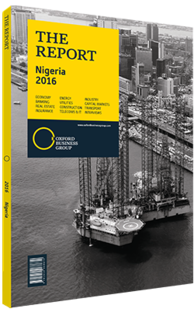Plans to introduce dry ports in Nigeria to reduce congestion
A decade after the government first unveiled an initiative to bring a network of dry ports to Nigeria, the first signs that the infrastructure will take hold have emerged. In the last 12 months, plans to establish inland container depots have been revived. Such moves bode well for an improved intermodal environment, a reduction in seaport congestion and increased cross-border trade between the north of Nigeria and neighbouring landlocked countries.
Dry Ports
In March 2006 the Federal Executive Council approved plans for six dry ports to be developed under public-private partnerships using a build-own-operate-transfer model. Eight locations have been chosen for the facilities, which will have the same functions as seaports, including the ability to process cargo and clear it through Customs.
The ports, to be located at Ibadan in Oyo State, Isiala Ngwa in Abia State, Jos Heipang in Plateau State, Bichi Village in Bauchi State, Gombe in Gombe State, Bulunkutu in Borno State, Zawachiki in Kano State and Zanfarawa-Funtua in Katsina State, will have a combined capacity of 179,000 twenty-foot-equivalent units. Concessionaires have also been approved for the developments, which will be operated by private consortia for 25 years. These include Catamaran Logistics, Dala Inland Dry Port, Dunca Maritime, Eastgate Terminal, Inland Containers Nigeria, Equatorial Maritime and Migfo Nigeria.
Congestion
The decision to return to dry ports was largely driven by congestion at the country’s seaports in the south. Lagos has long been dealing with excessive traffic congestion around the port area and high dwell times for ships waiting outside the harbour. A lack of modernisation in Customs procedures, in particular, have led to significant dwell times. “Technology must be utilised to expedite the Customs process in Nigeria,” Eric Opah, CEO of Fortune Global Shipping and Logistics, told OBG. “Although the past five years have seen incremental improvements in the process, there is still room for improvement.” Port delays have incurred additional costs for importers and exporters, as well as freight forwarders and shipping lines. A paper by the US National Bureau of Economic Research has found that each day goods are in transit, their worth is reduced by between 0.6% and 2%. For Nigerian firms, this translates into a significant cost. However, despite the clear rationale for rolling out inland port facilities, there has been little movement towards their realisation over the last ten years. This is due to poor road and rail infrastructure reducing the efficacy of such facilities.
Renewed Efforts
However, the last 12 months have seen significant movement on the launch of dry ports. In May 2015 the government gave the Kaduna inland facility full status as a port, giving it the title of port of origin and final destination for imports and exports. Kaduna is considered an administrative capital and a centre of commerce and industry.
The addition of the new facility will enable shippers from the north of the country and from Niger and Chad to clear Customs and send goods from Kaduna, as though they are sending them from one of the Nigeria’s seaports. The port will have the capacity to handle 29,000 containers annually, and is expected to generate a number of employment opportunities for the local community.
A Helping Hand
The launch of operations at Kaduna appears to have helped accelerate progress on the other ports. In November 2015, five months after the inauguration of the Kaduna facility, Simon Lalong, the governor of Plateau State, said that he was looking into resuscitating plans for an inland container facility. The original plan, conceived as a component of the federal government’s strategy in 2006, had been cancelled by the previous state administration. The state is now once again looking for private investors to develop the project.
You have reached the limit of premium articles you can view for free.
Choose from the options below to purchase print or digital editions of our Reports. You can also purchase a website subscription giving you unlimited access to all of our Reports online for 12 months.
If you have already purchased this Report or have a website subscription, please login to continue.

